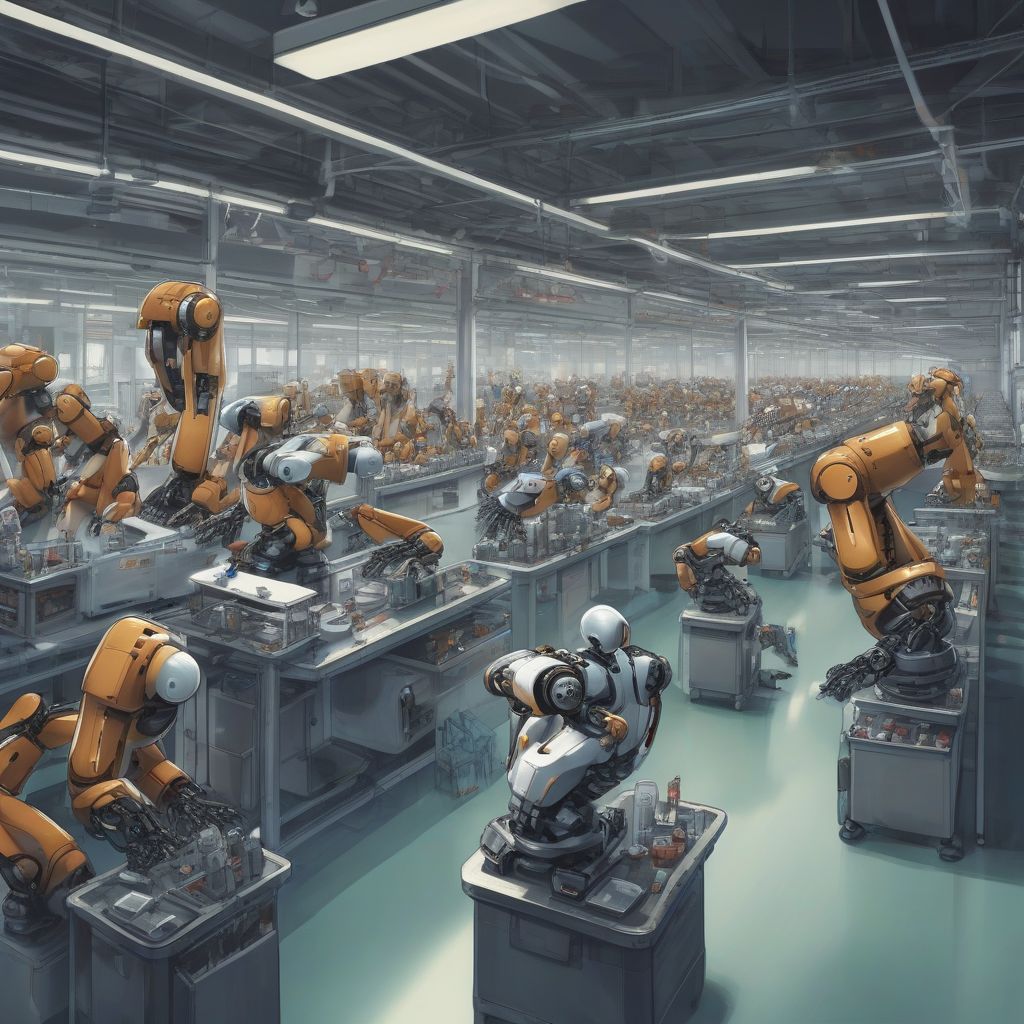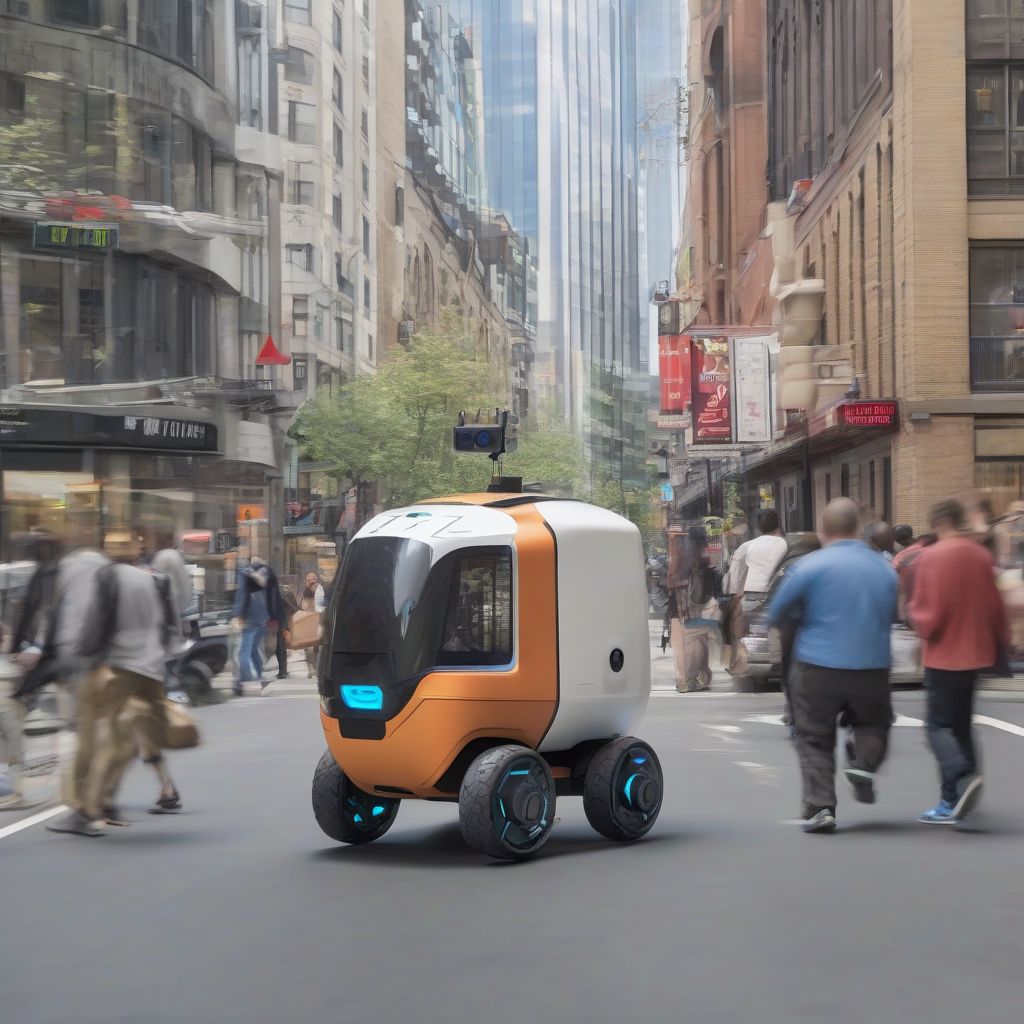Imagine a world where tedious, repetitive tasks are a thing of the past, where machines work alongside humans, not just performing tasks but learning and adapting to new challenges. This isn’t science fiction; it’s the reality of how AI and robotics are transforming industries right now. From manufacturing to healthcare, from transportation to customer service, these technologies are revolutionizing the way we work and live.
The Rise of the Machines: Understanding AI and Robotics
Before we dive into the specifics, let’s clarify what we mean by AI and robotics.
- Artificial Intelligence (AI): AI refers to computer systems that are designed to mimic human intelligence. This includes tasks like learning, problem-solving, and decision-making.
- Robotics: Robotics involves the design, construction, operation, and application of robots. These robots often use AI to perform tasks autonomously or semi-autonomously.
Industries Undergoing a Technological Revolution
The impact of AI and robotics is far-reaching, touching nearly every sector of the economy. Here’s a closer look at some of the most significant transformations:
1. Manufacturing: A New Era of Efficiency and Productivity
Manufacturing was one of the first industries to embrace automation with the introduction of assembly lines. Now, AI and advanced robotics are taking efficiency to a whole new level.
- Smart Factories: Imagine factories where machines communicate with each other, optimizing production processes in real-time. AI-powered systems can predict maintenance needs, reducing downtime and saving costs.
- Collaborative Robots (Cobots): These robots are designed to work safely alongside humans, taking over physically demanding or dangerous tasks and allowing human workers to focus on more complex activities.
 AI-powered factory robots
AI-powered factory robots
2. Healthcare: Advancing Patient Care and Medical Discoveries
The healthcare industry is experiencing a technological renaissance thanks to AI and robotics.
- Precision Medicine: AI algorithms can analyze vast amounts of patient data to identify patterns and predict health risks, leading to more personalized treatment plans.
- Robot-Assisted Surgery: Surgical robots offer enhanced precision, minimally invasive procedures, and faster recovery times.
- Drug Discovery and Development: AI is accelerating the process of finding new drugs and therapies by analyzing biological data and predicting the effectiveness of potential treatments.
3. Transportation: Navigating Towards a Safer, More Efficient Future
From self-driving cars to optimized logistics, AI and robotics are reshaping the transportation sector.
- Autonomous Vehicles: Self-driving cars, trucks, and even delivery robots are no longer a futuristic concept. They hold the promise of increased safety, reduced traffic congestion, and improved fuel efficiency.
- Smart Traffic Management: AI-powered systems can analyze traffic patterns in real-time, optimizing traffic flow and reducing congestion in cities.
 Autonomous Delivery Robot on City Sidewalk
Autonomous Delivery Robot on City Sidewalk
[amazon bestseller=”autonomous vehicles”]
4. Customer Service: Personalized Experiences and 24/7 Availability
Remember the days of waiting on hold for hours? AI-powered customer service solutions are changing that.
- Chatbots: AI-powered chatbots can handle a wide range of customer inquiries, providing instant support and freeing up human agents for more complex issues.
- Personalized Recommendations: Have you ever wondered how online retailers seem to know exactly what you’re looking for? AI algorithms analyze your browsing and purchase history to offer personalized product recommendations.
5. Finance: Making Smarter Decisions, Managing Risk
The financial industry relies heavily on data analysis, making it a prime candidate for AI disruption.
- Fraud Detection: AI algorithms can detect fraudulent transactions in real-time, preventing financial losses for both businesses and consumers.
- Algorithmic Trading: AI-powered systems can analyze market data and execute trades at speeds impossible for human traders, potentially leading to more profitable investments.
The Human Element: Adapting to the Changing Job Market
The rise of AI and robotics has sparked a debate about the future of work. While some worry about job displacement, others see an opportunity for humans and machines to work together in new and innovative ways.
- Upskilling and Reskilling: It’s crucial for workers to adapt their skills to the changing job market. As AI and robotics take over routine tasks, the demand for roles that require creativity, critical thinking, and emotional intelligence will continue to grow.
The Future of Industries: Embracing Innovation
The integration of AI and robotics into various industries is still in its early stages, but the potential for positive change is immense. These technologies have the power to:
- Increase Efficiency and Productivity: Automating tasks allows businesses to produce more output with fewer resources, leading to economic growth.
- Improve Safety: Robots can perform dangerous jobs, reducing the risk of workplace accidents and injuries.
- Enhance Customer Experiences: Personalized services and 24/7 availability lead to greater customer satisfaction.
- Drive Innovation: As AI and robotics continue to evolve, they will undoubtedly lead to the creation of new products, services, and industries that we can’t even imagine today.
The key to successfully navigating this technological revolution lies in embracing change, fostering innovation, and equipping ourselves with the skills needed to thrive in a future where humans and machines work side-by-side.
